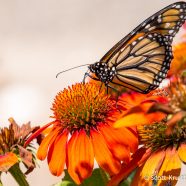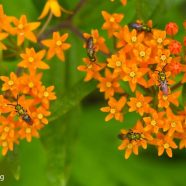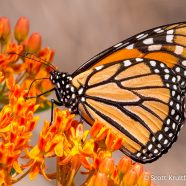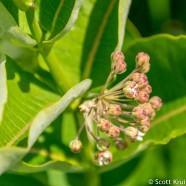Butterfly Weed Party
Below is a photo of an absurd scene that became normal this August on any Butterfly Weed (Asclepias tuberosa) that I could find – look at all those butterflies! The fiery orange flower is a native milkweed and extremely attractive to a wide variety of species looking for some nectar. We have an Orange Sulphur, Crescents, and the iconic and wonderfully matched Monarchs all feeding here. Just how many Crescents can we fit on one bloom? Take a look at this Monarch as it is showing some signs of wear and tear. This individual likely took a long journey to us and now it will mate, lay eggs,...
Read MoreMonarch on Coneflower
This Monarch butterfly (Danaus plexippus) certainly chose the correct color of coneflower to nectar on as photographed yesterday. It is now egg and caterpillar season! Have you found any on your milkweed?
Read MoreButterfly on Butterfly
Here we have butterfly on butterfly – Monarch (Danaus plexippus) butterflies nectaring on this Butterfly Weed (Asclepias tuberosa) as photographed yesterday and today. The Asclepias likely tipped you off to the fact that this is indeed a species of native milkweed plant. It is always attractive to our lepidoptera. Enjoy the orange on orange! Have you found your Monarchs yet? How about any eggs or caterpillars? Scott Kruitbosch Conservation & Outreach Coordinator
Read MoreMuch Milkweed
It is becoming more and more apparent that what pollinators need are more of their plants, and without chemicals! The Monarch butterfly needs milkweed like this in fields and grasslands across America. If you have open space like this please try to do your best to keep them unmowed, unpolluted and full of milkweed plants next year. Manicured and toxic lawns are wastelands for our insects.
Read More








